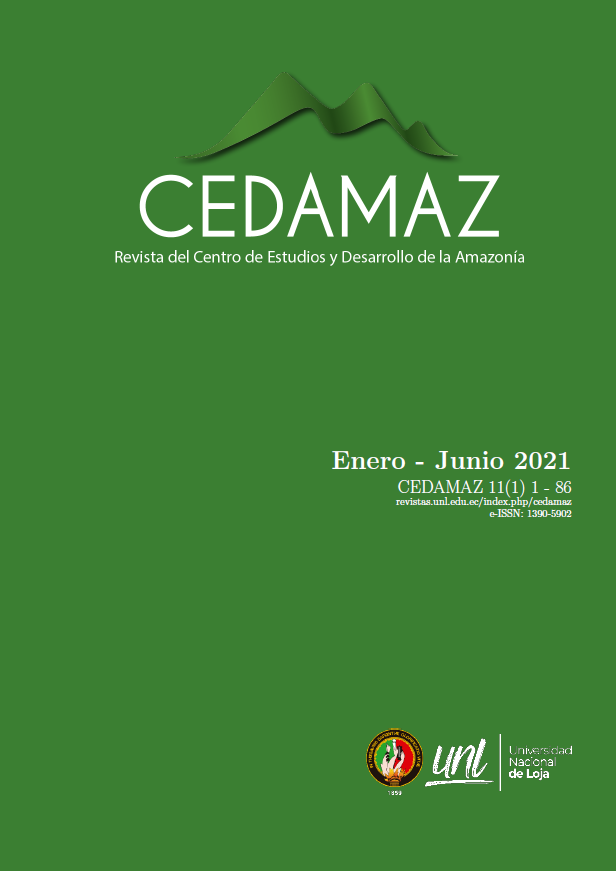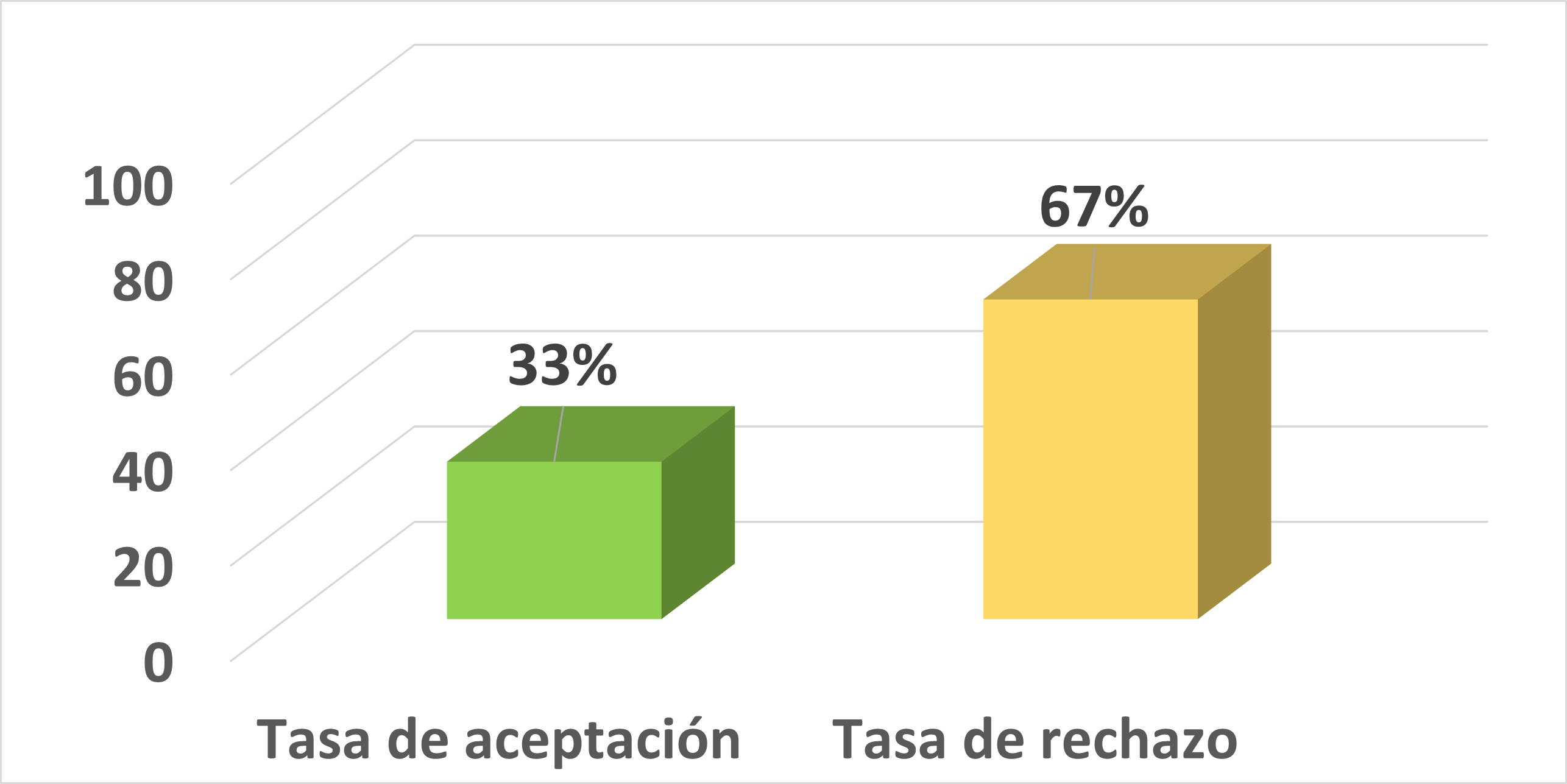Association between self-prescription and functional capacity of the elderly adult in the province of Loja, 2019
Keywords:
Medications, Self-prescription, Self-medication, Elderly, FunctionalityAbstract
Older adults, according to their functional status, carry out self-care practices to cope with illnesses and ailments. One risky practice is self-prescription. The purpose of this study was to determine the prevalence of self-prescription in this age group of the population considering the sociodemographic characteristics and the functionality criterion. The sample consisted of 395 older adults from the different cantons of the province of Loja, the survey was used as an instrument, which was aimed at inquiring about sociodemographic aspects and self-prescription. To assess functional capacity, the Lawton and Brody Scale was used, which made it possible to measure the degree of autonomy or dependence of the elderly to carry out the instrumental activities of daily life. A score ranging between 0-7 points indicated functional dependence. The statistical test of Chi square was applied at 95% probability. The results obtained were that 24,00% of the population practice self-prescription, predominantly in adults over 80 years of age (34,20%), female (28,60%), widowers (29,50%), from the urban area (25,00%) and without work or occupation (26,80%). According to the functionality criterion, functionally dependent older adults are the ones who incur the highest proportion in the practice of self-prescription (31,10%). According to the analysis of variables, it was established that there is a significant statistical relationship between functional dependence and self-prescription.References
Abril, C. (2020). Automedicación en adultos mayores de 65 añs de la parroquia Sinincay, Cuenca-Ecuador, 2019. https://dspace.ucacue.edu.ec/handle/ucacue/7954 Advinha, A. M., Lopes, M. J., de Oliveira-Martins, S. (2017). Assessment of the elderly’s functional ability to manage their medication: a systematic literature review. International Journal of Clinical Pharmacy, 9(1).https://doi.org/10.1007/s11096-016-0409-z Alfaro, D. (2016). Causas y Consecuencias de la Automedicación: Experiencia de 10 Adultos Mayores del Cantón de Grecia Durante el I trimestre de 2016. Pro Veritatem, 2(2), 8–28.
Arenas Jiménez, M. D., Navarro García, M., Serrano Reina, E., Álvarez-Ude, F. (2019). Dependencia para las actividades instrumentales de la vida diaria en pacientes en hemodiálisis: influencia sobre la calidad de vida relacionada con la salud. Nefrología, 39(5), 531–538.https://doi.org/10.1016/j.nefro.2019.03.006
Carmona-Torres, J. M., Rodríguez-Borrego, M. A., Laredo-Aguilera, J. A., López-Soto, P. J., Santacruz-Salas, E., Cobo-Cuenca, A. I. (2019). Disability for basic and instrumental activities of daily living in older individuals. PLoS ONE, 14(7), 1–13. https://doi.org/10.1371/journal.pone.0220157
Chumpitaz Chávez, Y., Moreno Arteaga, C. (2016). Nivel de funcionalidad en actividades básicas e instrumentales de la vida diaria del adulto mayor. Revista Enfermeria Herediana, 9(1), 30. https://doi.org/10.20453/renh.v9i1.2860 Dockx, Y. J. C., Molenaar, E. A. L. M., Barten, D. J. J. A.,
Veenhof, C. (2020). Discriminative validity of the Core outcome set functional independence in a population of older adults. BMC Geriatrics, 20(1), 1–12. https://doi.org/10.1186/s12877-020-01705-6
Dombrowsky, T. A. (2017). Relationship between engagement and level of functional status in older adults. SAGE Open Medicine, 5, 205031211772799. https://doi.org/10.1177/2050312117727998
Gao, Z., Xu, L., Qin, W., Zhang, J., Zhou, J., Hu, F., Hong, Z. (2020). Prevalence and associated factors of self-treatment among the elderly—a comparative study between empty and non-empty nesters in Shandong, China. International Journal of Environmental Research and Public Health, 17(21), 1–11. https://doi.org/10.3390/ijerph17217880
Guerra, P. (2019). El concepto de cuarta edad; realidad demográfica y respuestas de política pública. Los casos de España, Alemania, y Uruguay. Biblioteca Del Congreso Nacional de Chile, 119664, 1–17.
Japon, M., Ochoa, A. (2019). Prevalencia y factores asociados a la automedicación en adultos mayores en el Hospital Julius Doepfner, Zamora, Mayo - Diciembre 2018 [Universidad Católica de Cuenca].
Lao, S. S. W., Low, L. P. Le, Wong, K. K. Y. (2019). Older residents’ perceptions of family involvement in residential care. International Journal of Qualitative Studies on Health and Well-Being, 14(1). https://doi.org/10.1080/17482631.2019.1611298
Lei, X., Jiang, H., Liu, C., Ferrier, A., Mugavin, J. (2018). Self-medication practice and associated factors among residents in Wuhan, China. International Journal of Environmental Research and Public Health, 15(1). https://doi.org/10.3390/ijerph15010068
Leiton, Z. (2016). El envejecimiento saludable y el bienestar: un desafío y una oportunidad para enfermería. Enferm. Univ, 13(3), 139–141.
Martínez Pérez, T., González Aragón, C., Castellón León, G., González Aguiar, B. (2018). El envejecimiento, la vejez y la calidad de vida: ¿éxito o dificultad? Rev. Finlay, 8(1), 59–65.
Mc Gillicuddy, A., Kelly, M., Crean, A. M., Sahm, L. J. (2019). Understanding the knowledge, attitudes and beliefs of community-dwelling older adults and their carers about the modification of oral medicines: A qualitative interview study to inform healthcare professional practice. Research in Social and Administrative Pharmacy, 15(12), 1425–1435. https://doi.org/10.1016/j.sapharm.2019.01.004
Meucci, R. D., Aguiar de Oliveira, A. S. L., Araújo, G. C., Gonzalez, T. N., Pagliaro, G., Hoffmann, T., Marmitt, L. P. (2020). Functional dependence among older adults: a cross-sectional study with a rural population ofsouthern Brazil. Rural and Remote Health, 20(4), 5985. https://doi.org/10.22605/RRH5985
Ministerio de Inclusión Económica y Social. (2019). Escala de Lawton y Brody (Actividades Instrumentales de la vida diaria) Ficha 3 b (Issue 1, pp. 1–4). ttps://www.inclusion.gob.ec/wpcontent/uploads/2019/01/3b-ESCALA-DE-LAWTONY-BRODY.pdf
Mortazavi, S. S., Shati, M., Khankeh, H. R., Ahmadi, F.,Mehravaran, S., Malakouti, S. K. (2017). Self-medicationamong the elderly in Iran: A content analysis study. BMC Geriatrics, 17(1), 1–12. https://doi.org/10.1186/s12877-017-0596-z
Oliveira, A., Nossa, P., Mota-Pinto, A. (2019). Assessing functional capacity and factors determining functional decline in the elderly: A cross-sectional study. Acta Medica Portuguesa, 32(10), 654–660. https://doi.org/10.20344/amp.11974
Ribeiro, D. K. de M. N., Lenardt, M. H., Lourenço, T. M., Betiolli, S. E., Seima, M. D., Guimarães, C. A. (2018). The use of the functional independence measure in elderly. Revista Gaucha de Enfermagem, 38(4), e66496–e66496. https://doi.org/10.1590/1983-1447.2017.04.66496
Rositas, J. (2014). Los tamanos de las muestras en encuestas de las ciencias sociales y su repercusion en la generacion del conocimiento. Innovaciones de Negocios, 11(2), 235–268.
Sacta, J., Zhingri, D. (2016). “Conocimientos, Actitudes Y Prácticas Del Ejercicio Físico En Adultos Mayores, Que Asisten Al Club De Diabéticos E Hipertensos Del Centro De Salud Totoracocha, Cuenca 2016. Universidad de Cuenca.
Santillán, M., Gómez, B., Hernández, M., González, G., Herrera, E., Martínez, A. (2018). Prácticas de autocuidado en adultos mayores: un estudio cualitativo en una poblaciónmexicana. Revista de Enfermagem Referência, IV Série(No16), 117–126. https://doi.org/10.12707/riv17065
Secoli, S. R., Marquesini, E. A., Fabretti, S. de C., Corona, L. P., Romano-Lieber, N. S. (2018). Self-medication practicetrend among the brazilian elderly between 2006 and 2010: SABE study. Revista Brasileira de Epidemiologia, 21(Suppl 2). https://doi.org/10.1590/1980-549720180007.supl.2
Tornero-Quiñones, I., Sáez-Padilla, J., Díaz, A. E., Robles, M. T. A., Robles, Á. S. (2020). Functional ability, frailty and risk of falls in the elderly: Relations with autonomy in daily living. International Journal of Environmental Research and Public Health, 17(3), 1–12. https://doi.org/10.3390/ijerph17031006
Troya, G. (2019). Polifarmacia en los adultos mayores que reciben atencion en el Centro de Salud tipo C de Catamayo.
Valdes, L., Fernandez, M., Montes, A. (2019). Caracterización de los ancianos frágiles del Policlínico Universitario Cerro en el periodo 2017 – 2018. Revista Electrónica Medimay, 26(2), 171–184.
Vieira de Oliveira, S. B., Costa Barroso, S. C., Camargos Biclho, M. A., Moreira Reis, A. M. (2018). Baixo peso ao nascer e seus fatores associados Low birth weight and its associated factors. Einstein, 16(4), 1–6. https://doi.org/10.31744/einstein
Zhang, L., Cui, H., Chen, Q., Li, Y., Yang, C., Yang, Y. (2021). A web-based dynamic Nomogram for predicting instrumental activities of daily living disability in older adults: a nationally representative survey in China. BMC Geriatrics, 21(1), 1–12. https://doi.org/10.1186/s12877-021-02223-9
Published
How to Cite
Issue
Section
License

This work is licensed under a Creative Commons Attribution-NonCommercial-NoDerivatives 4.0 International License.
Those authors who have publications with this journal, accept the following terms:
- After the scientific article is accepted for publication, the author agrees to transfer the rights of the first publication to the CEDAMAZ Journal, but the authors retain the copyright. The total or partial reproduction of the published texts is allowed as long as it is not for profit. When the total or partial reproduction of scientific articles accepted and published in the CEDAMAZ Journal is carried out, the complete source and the electronic address of the publication must be cited.
- Scientific articles accepted and published in the CEDAMAZ journal may be deposited by the authors in their entirety in any repository without commercial purposes.
- Authors should not distribute accepted scientific articles that have not yet been officially published by CEDAMAZ. Failure to comply with this rule will result in the rejection of the scientific article.
- The publication of your work will be simultaneously subject to the Attribution-NonCommercial-NoDerivatives 4.0 International (CC BY-NC-ND 4.0)









